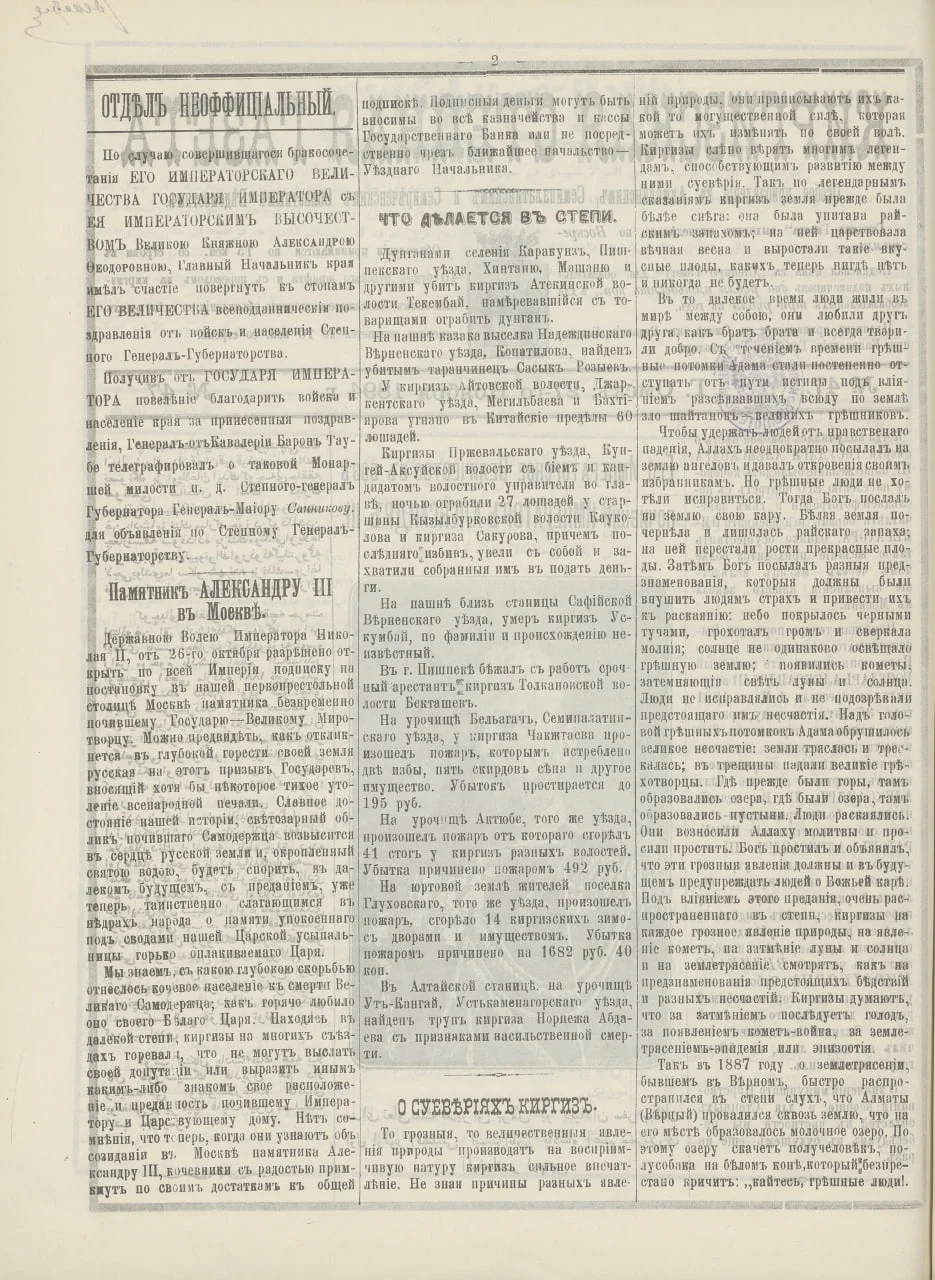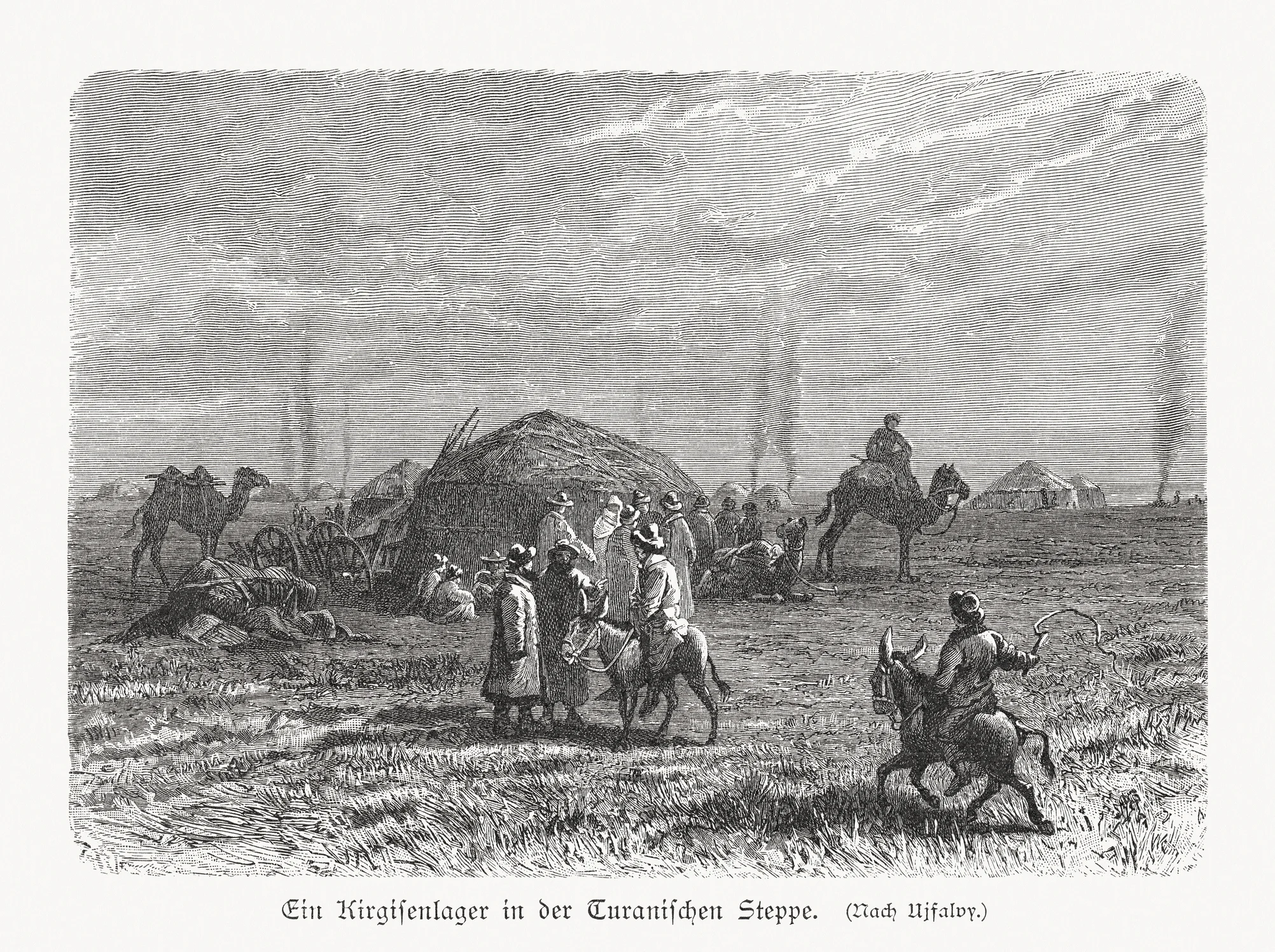As the nineteenth century gave way to the twentieth, a great wave of awakening surged through Kazakh intellectuals, sparking a passionate quest for knowledge. This outpouring of intellectual zeal led to an explosion of new magazines and newspapers being published in Kazakh, heralding the dawn of a new era in sharing culture.
However, what these intellectuals wrote went beyond only spreading knowledge. Soon, a variety of publications emerged, covering topics like business, society, politics, art, and humor. Qalam invites you to explore snippets from Kazakh publishing culture and history, offering a glimpse into the important issues of the past.
After 1882, the Akmolinsk region was part of the General-Governorship of the Steppe, or the Steppe Krai, with its administrative center in Omsk.i

For instance, an article on Kazakh superstitions, published in issue № 47 on 27 November 1894,i
As the legendary tales of the Kirghiz tell, the earth was once whiter than snow. It was sustained by a heavenly fragrance, with eternal spring reigning over it, and it bore such delicious fruits that they can be found nowhere today, nor will they ever be again.
According to the author, the Kazakhs are particularly sensitive to nature's majestic phenomena:
For example, in 1887, after an earthquake in Verny, a rumor quickly spread across the steppe that Almaty (Verny) had sunk into the ground, and a milky lake had formed in its place. Over this lake, a half-man, half-dog on a white horse was said to be galloping, constantly shouting, ‘Repent, sinful people!’

The Kirgizskaia stepnaia gazeta (In Kazakh, Dala Uälaiatynyñ Gazetі) was a special supplement to the Akmolinsk (1888–1905), Semipalatinsk (1894–1905), and Semirechensk (1894–1901) regional gazettes. It was published in Omsk in Russian with additional content in Kazakh.




